Opinion: Clean drinking water top priority
 -File Photo
-File PhotoWEB DESK: Access to safe drinking water is not only a basic need and precondition for a healthy life but it is also a basic human right.
At the same time, water is a scarce resource and its shortage usually results in economic and health crises. This can be assessed from global trends as well as from Pakistan's national and local struggles for better access to safe drinking water.
Comprising 144 tehsils in 36 districts, Punjab is the most populous of the five provinces of Pakistan, with an estimated population of over 100 million peoples. Main drinking water source is groundwater in the province, which once was considered to be safe but over the years it is increasingly found to be contaminated with bacteriological and chemical pollutants.
Water contamination in rural areas is mainly caused due to discharge of domestic sewage directly or indirectly into water bodies, open defecation, agricultural run-off during rainy season containing chemical fertilisers and pesticides and effluents from agro-based industries. Majority of population in the province is exposed to hazards of drinking unsafe and polluted water from both surface and ground water sources. Contaminated water is a source of many diseases including diarrhea, typhoid, intestinal worms and hepatitis. Four major contaminants in drinking water sources are bacteriological, arsenic, nitrate and fluoride.
Access to tap water is very low in rural areas - 13 percent - as compared to 43 percent in urban areas of Punjab and the quality of drinking water remains substandard as the major sources are hand pumps and turbines supplying contaminated or brackish water.
According to Pakistan Council of Research in Water Resources Survey2011-12, it has been found that 79 percent sources of water supply schemes are unsafe for drinking. Additionally, 88 percent water supply schemes are found unfit at consumer's end. Moreover, 35 percent of the existing rural water supply schemes are either abandoned or non-functional.
Pakistan Social and Living Measurement Survey 2012-13 found that access to safe tap water is merely 13 percent in rural Punjab. Public Health Engineering Department survey carried out in association with UNICEF in 2014 highlighted that excessive chemical contamination comprising totally dissolved salts (TDS), arsenic, fluoride and nitrate has rendered water of 73 percent of the total Punjab villages unfit for drinking. Percentage of contaminated water rises to 77 percent if microbial contamination is also included. Resultantly, water-borne diseases are alarmingly effecting the healthcare and economy of the inhabitants of the province.
In 2010, UNICEF reported that diseases related to hygiene and water quality, such as diarrhea, contribute to Pakistan's high child mortality rate, which accounts for 11 percent of all deaths among children under the age of five with a total of over 40,000 deaths every year.
Punjab Health Department found that 2.8 million people were reportedly suffering from water-borne diseases in Punjab province during year 2014. Decades of lack of institutional capacity, poor weak sector governance, inadequate investment in water sector coupled with poor operations and maintenance practices have contributed to uncontrolled water extraction and supply of contaminated water to the population in rural areas and settlements of the province.
Realising the gravity of situation, government of the Punjab has launched a Rs 300 billion robust and comprehensive programme captioned "Khadim-e-Punjab Saaf Pani Programme" to provide safe and clean drinking water to marginalized and excluded segments of society inhibiting in far off villages and settlements of the province.
For this purpose, Punjab Saaf Pani Company (PSPC) has been established to plan and execute the programme with the aim of providing affordable and safe drinking water in phases to more than 55 million unserved and underserved rural population as per the WHO standards till April 2018.
Geographically, districts of Punjab have been divided into eight regions on the basis of priority in terms of poverty index, quality of water, service delivery and disease trend. Every package comprises three to five districts. Engineering Management Consultants (EMC) led by international experts were hired for each region to carry out water quality and quantity survey of all areas, prepare GIS maps for all kinds of contamination, identify appropriate sources for water supply and carry out electrical resistivity survey (ERS) to determine aquifer quality and potential yield, conduct environment impact assessment (EIA) in the light of likely solution, propose treatment options based upon water quality, carry-out financial modelling to identify most cost effective option and prepare necessary documentation for hiring international engineering, planning and construction (EPC) contractors to implement water treatment projects, equipped with state-of-the-art technology and backed up by alternative energy source vis-Ã -vis using grid as the basic source.
Secondary data on water quality was also collected from all possible sources including but not limited to Public Health Engineering Department, Pakistan Council of Research in Resources (PCRWR), UNICEF, Local Government, Department of Land Reclamation, Wapda, etc, all over Punjab.
Keeping in view the complexity of projects in terms of technology, sustainability, value for money and associated risks, well-reputed international companies from China, the UAE, Turkey, Germany, Austria, Australia, etc, have been engaged for designing, procurement, installation, operation and maintenance of clean drinking water supply solutions all over the province. Each contractor will be responsible to provide water at a point less than half km from the farthest household while maintaining operations and maintenance of its plant at least for five years.
As far as water treatment options are concerned, each contractor is bound to provide the most economically feasible, technically sound, environmentally sound and socially acceptable solution. Likely solutions include canal seepage based package plant involving sand filtration, activated carbon adsorption and disinfection. Contaminated canal seepage water will be treated by a contaminant specific column added to the package plant. Surface water from a reservoir will be treated using conventional treatment, ie, pre-sedimentation, coagulation, flocculation, sedimentation, dual filtration and disinfection. Surface water from a canal will be treated either through conventional treatment or slow sand filtration followed by disinfection.
In areas of totally dissolved salt (TDS) is greater than 1000ppm, consultant will hunt for sweet water aquifer first. In case of failure, Reverse Osmosis Plant may be installed. In areas of small scattered communities where water TDS is less than 1000ppm, Ultra Filtration Plant may be installed.
In addition to Engineering Management Consultants, Social Mobilizing Consultants (SMCs) have also been hired in each region for development of Saaf Pani Tanzeems (village level community organisations) to take control of the projects. These SMCs are motivating and mobilizing communities to work with the company in acquiring land and running plants operations.
In order to monitor performance of plants, Supervisory Control and Data Acquisition (SCADA) system will be in place. All systems will be designed to provide three litres of clean drinking water for per person per day. Getting top ranking based on the priority index, Bahawalpur Region in South Punjab has been selected for pilot project where 116 reverse osmosis and ultra filtration plants have been installed, which are providing safe and clean drinking water to more than 350,000 peoples.
In Phase-I of the project, 14 contracts worth Rs 195 billion are being awarded to international contractors pre-qualified and selected through rigorous and transparent competitive bidding for provision of safe drinking water to 23 million populations in 36 tehsils of ten very high priority districts namely Kasur, Sahiwal, Okara, Faisalabad, Lodhran, Bahawalpur, Rahimyar Khan, Rajanpur, Dera Ghazi Khan and Muzaffargarh. This phase is expected to complete by December 2017.
In Phase-II, seven contracts worth PKR 71.8 billion will be awarded to international contractors for provision of safe drinking water to 7.69 million populations in 12 tehsils. This phase is expected to complete by Mar 2018.
In Phase-III, eight contracts worth PKR 89.7 billion will be awarded to international contractors for provision of safe drinking water to 9.8 million populations in 19 Tehsils. This phase is expected to complete by April 2018.
The Punjab government is very much aware of the importance of clean drinking water because it understands that for poverty eradication, health and socio-economic progress, it must provide clean drinking water to rural communities. This clean drinking water programme is unique in the sense that it is for the first time in the history of Pakistan that such a gigantic and effective programme has been launched to cater to the clean drinking water needs of such a huge chunk of population in rural and peri-urban areas of the province.
Once completed, the clean drinking water programme shall result in drastic cut in health expenditures and a transformed lifestyle of the communities in the biggest province of the country, who could not have imagined even in their wildest of dreams to have a sustained access to tap water.
(The writer is Manager Corporate Communication & Strategy, Punjab Saaf Pani Company)
Source: Business Recorder







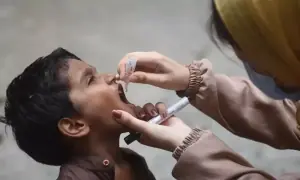
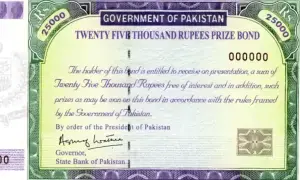
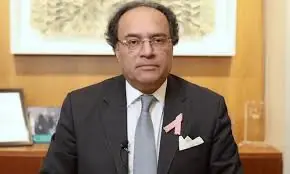
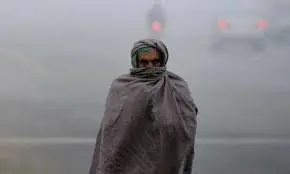

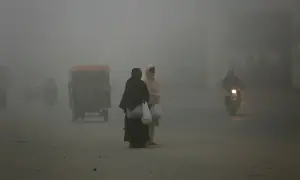





Comments are closed on this story.